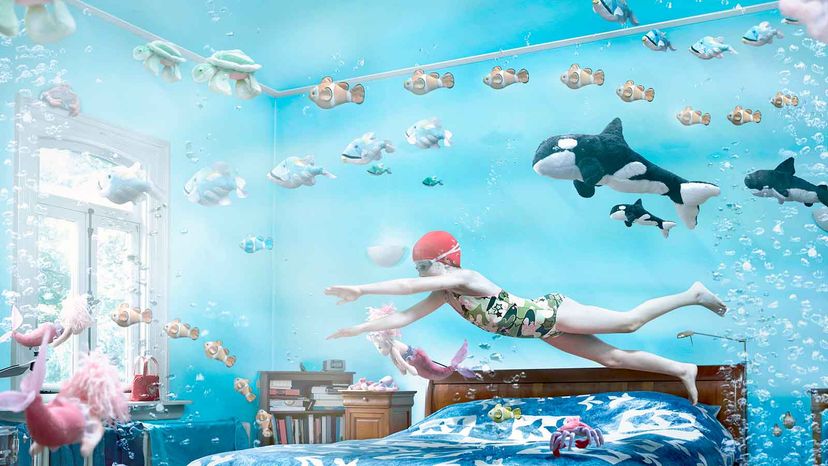Dreams: The Theoretical Divide

First and foremost, in dream theory is the founder of psychoanalysis, Sigmund Freud. Falling into the psychological camp, Freud's theories are based on the idea of repressed longing — the desires that we aren't able to express in a social setting.
Dreams allow the unconscious mind to act out those unacceptable thoughts and desires. For this reason, his theory about dreams, as described in his book "The Interpretation of Dreams," focuses primarily on sexual desires and symbolism.
Advertisement
For example, any cylindrical object in a dream represents the penis, while a cave or an enclosed object with an opening represents the vagina. Freud lived during the sexually repressed Victorian era, which in some way explains his focus.
Carl Jung studied under Freud but soon decided his own ideas differed from Freud's to the extent that he needed to go in his own direction. Jung agreed with the psychological origin of dreams, but rather than saying that dreams originated from our primal needs and repressed wishes, he felt that dreams allowed us to reflect on our waking selves and solve our problems or think through issues.
More recently, around 1977, researchers Allan Hobson and Robert McCarley set forth another theory that threw out the old psychoanalytical ideas. Their research on what was going in the brain during sleep gave them the idea that dreams were simply the result of random electrical brain impulses that pulled imagery from traces of experience stored in the memory.
According to this model, known as the activation-synthesis hypothesis, dreams are the result of physiological processes. The forebrain is attempting to make sense of the signals that fire during REM sleep. Hobson described five key characteristics of dreams:
- illogical content
- odd sensory experiences
- intense emotions
- acceptance of strange events
- difficulty in remembering them
This theory was controversial because of its leap away from the accepted theories, but it has evolved since Hobson and McCarley introduced it. Expanding on the activation-synthesis hypothesis, Hobson proposed the AIM model, which describes the importance of brain activation, input-output gating and chemical modulation to the dreaming process. Still, this theory is limited and does not fully explain why we dream.
Francis Crick, the scientist best known for his role in identifying the structure of DNA, proposed that we dream to forget. During dreams, he posited, we replay the events of the day so that we can erase the random, hybrid associations that we craft from real memories and strengthen the legitimate memories. He called it "reverse learning." Crick did not think that his explanation was comprehensive enough to completely explain dreaming, but he did think that it was a good starting point. In 1983, Crick and Graeme Mitchison published a paper in the journal Nature expounding on their proposed mechanism of reverse learning.
Mainstream science has largely discounted Freud's dream theories, yet theories about why we dream abound. Psychology professor G. William Domhoff proposed a neurocognitive theory of dreams that detailed the similarities of dreams and waking thought. He concluded that dreams likely have no adaptive function in an evolutionary sense. The self-organization theory of dreaming suggests that the brain combines signals into a relatively continuous narrative during sleep. And the threat simulation theory of dreaming states that we dream to rehearse threatening situations, so that we are better prepared to face danger in the waking world.
The list goes on; contemporary hypotheses claim that dreaming helps us process emotions, clear mind clutter, maintain proper brain function and promote creativity. Considering the complexity of dreaming and the difficulty of studying it, a consensus on its purpose will be hard to reach.
Let's look at what happens if you don't get any REM sleep.